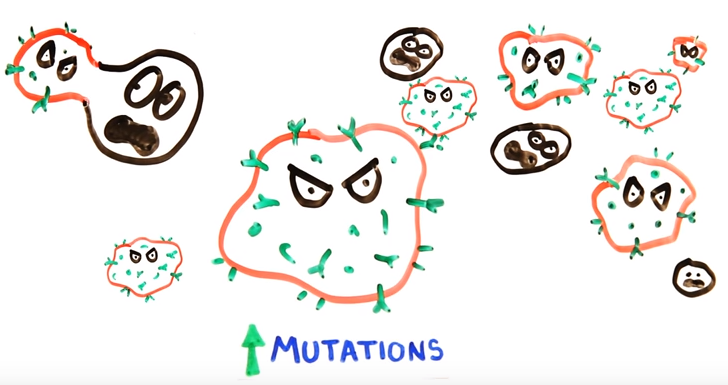Understanding HIV/AIDS: The Process Of Transmission, Plus Preventive Measures Everyone Can Take

Actor Charlie Sheen's recent announcement has reinvigorated the conversation surrounding HIV/AIDS, and AsapSCIENCE’s new video aims to answer basic questions and concerns.
To start, how do you get HIV? Hosts Mitchell Moffit and Gregory Brown explain HIV must enter through the bloodstream; in most cases it's by infected fluids, such as blood, semen, vaginal fluids, and breast milk. Once the virus is in the blood, it targets T-cells — a type of white blood cell that's central to a healthy immune system. The "outer envelope" of the virus is covered in ever-mutating glycoproteins, which ultimately tricks T-cells to not recognize the virus, only making it easier for it to attach to more of these cells.
When HIV is attached to T-cells, it starts to fuse membranes together to release viral and replication enzymes. "Because HIV is a retrovirus, the RNA is transcribed into DNA. This DNA is then integrated into the host cell's genome," Moffit and Brown said.
At this point, the T-cells begin to treat the viral genes like its own, which causes it to make more copies of the virus. This high mutation rate is why HIV is so hard to treat. Moffit and Brown cited "overall, the replication creates more than 10 billion new virions each day." All of this often occurs without presenting symptoms for up to eight years, also known as the latency period — when untreated, HIV kills off the T-Cells it infects. HIV becomes AIDS (Acquired Immune Deficiency Syndrome) when a person's T-cell count falls below 200 cells per cubic milliliter of blood.
HIV/AIDS has reportedly taken the lives of 39 million people worldwide, with 35 million people currently fighting infection. There are a couple of classes of drugs that work to stop the virus from multiplying and preventive measures, like condoms and clean needle programs, can prevent transmission and drive down overall rates.
Watch the entire video above to learn more.



























